With a secure job as a bricklayer, Hugo Ramirez never thought he would need the help of charity to feed his family, but with the cost of living soaring across Europe, the 44-year-old father of three is one of a growing number of people in Spain turning to food banks to make ends meet.
“We see prices increase every week, even for basic goods,” he said as he stood before wooden crates of fruit and vegetables at the entrance of a residential building in Madrid.
Driven by Russia’s war in Ukraine, Spanish food prices last month jumped 15.4 percent from a year earlier, their biggest increase in nearly three decades, the National Statistics Institute said.
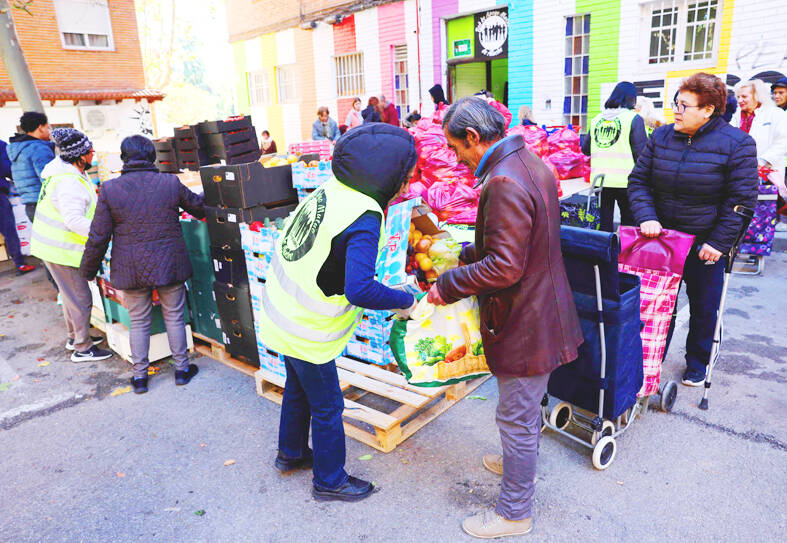
Photo: AFP
Sugar was up 42.8 percent, fresh vegetables rose 25.7 percent and eggs 25.5 percent as staple items soared.
In a bid to ease the pressure on squeezed households, Spanish Prime Minister Pedro Sanchez’s government — which faces an election next year — has spent billions of euros on extra welfare spending.
Every Saturday Ramirez, who is from Venezuela, comes to a food bank set up by a neighborhood association in the working-class district of Aluche during the COVID-19 pandemic to pick up food supplies.
He earns 1,200 euros (US$1,231) a month while his wife makes 600 euros working part-time as a domestic helper.
After paying their monthly rent of 800 euros and 300 euros for utilities “there is not much left,” he said.
The line of people seeking help stretches far down the street. Many of them are immigrants. Similar lines, dubbed “hunger queues,” can be seen regularly outside other food banks across the country.
“Every week we see new families in need, especially since the start of the war in Ukraine” in February, said Raul Calzado, a volunteer with the Aluche neighborhood association.
The association offers aid to 350 households, a number Calzado said he expects to rise to about 400 by the end of the year.
Behind him dozens of other volunteers are busy at work, surrounded by boxes of pasta, canned goods and baby diapers.
“Some beneficiaries have no revenues, but we also have more and more retirees with small pensions or people who work, but whose salaries are insufficent,” said Elena Bermejo, the association’s vice president.
Among the measures Spain has introduced are subsidies for transport, a one-off payment of 200 euros for the unemployed and a 15 percent increase in pensions for the most vulnerable such as widows.
However, charities say the measures are not enough.
“For some families, even buying a lite of olive oil or a kilo of lentils has become difficult,” Bermejo said.
Food banks, which had started to see dome relief as people returned to work after pandemic shutdowns, are struggling to meet the growing demand.
“With inflation, we are seeing a decrease in donations” as people have less money, Spanish Federation of Food Banks spokesman Luis Miguel Ruperez said.
Higher prices also means food banks can afford to buy less food themselves, he added.
Food banks provide help to more than 186,000 people in the Madrid region, and 1.35 million in total in Spain — roughly the same population as Barcelona, the country’s second-biggest city.
One household in seven in Spain experiences food insecurity, meaning inadequate or insecure access to food due to low income, a study published earlier this year by the University of Barcelona said.
“I hope it will get better but I’m afraid that won’t be the case,” Ramirez said, clutching a bag of groceries from the food bank.
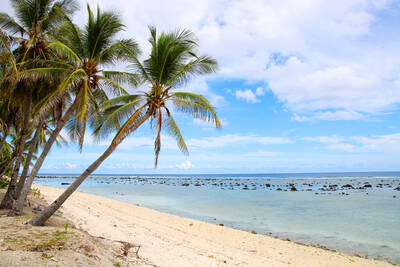
Nauru has started selling passports to fund climate action, but is so far struggling to attract new citizens to the low-lying, largely barren island in the Pacific Ocean. Nauru, one of the world’s smallest nations, has a novel plan to fund its fight against climate change by selling so-called “Golden Passports.” Selling for US$105,000 each, Nauru plans to drum up more than US$5 million in the first year of the “climate resilience citizenship” program. Almost six months after the scheme opened in February, Nauru has so far approved just six applications — covering two families and four individuals. Despite the slow start —
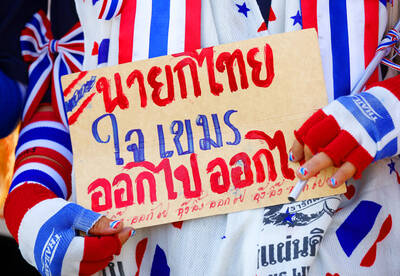
YELLOW SHIRTS: Many protesters were associated with pro-royalist groups that had previously supported the ouster of Paetongtarn’s father, Thaksin, in 2006 Protesters rallied on Saturday in the Thai capital to demand the resignation of court-suspended Thai Prime Minister Paetongtarn Shinawatra and in support of the armed forces following a violent border dispute with Cambodia that killed more than three dozen people and displaced more than 260,000. Gathered at Bangkok’s Victory Monument despite soaring temperatures, many sang patriotic songs and listened to speeches denouncing Paetongtarn and her father, former Thai prime minister Thaksin Shinawatra, and voiced their backing of the country’s army, which has always retained substantial power in the Southeast Asian country. Police said there were about 2,000 protesters by mid-afternoon, although
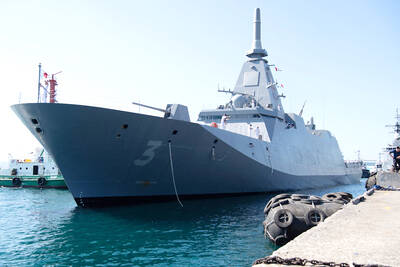
MOGAMI-CLASS FRIGATES: The deal is a ‘big step toward elevating national security cooperation with Australia, which is our special strategic partner,’ a Japanese official said Australia is to upgrade its navy with 11 Mogami-class frigates built by Japan’s Mitsubishi Heavy Industries, Australian Minister for Defence Richard Marles said yesterday. Billed as Japan’s biggest defense export deal since World War II, Australia is to pay US$6 billion over the next 10 years to acquire the fleet of stealth frigates. Australia is in the midst of a major military restructure, bolstering its navy with long-range firepower in an effort to deter China. It is striving to expand its fleet of major warships from 11 to 26 over the next decade. “This is clearly the biggest defense-industry agreement that has ever
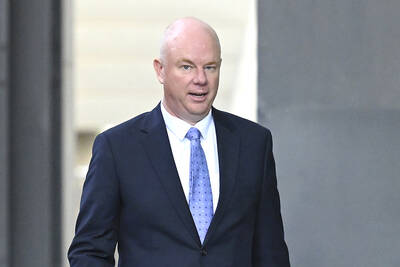
DEADLY TASTE TEST: Erin Patterson tried to kill her estranged husband three times, police said in one of the major claims not heard during her initial trial Australia’s recently convicted mushroom murderer also tried to poison her husband with bolognese pasta and chicken korma curry, according to testimony aired yesterday after a suppression order lapsed. Home cook Erin Patterson was found guilty last month of murdering her husband’s parents and elderly aunt in 2023, lacing their beef Wellington lunch with lethal death cap mushrooms. A series of potentially damning allegations about Patterson’s behavior in the lead-up to the meal were withheld from the jury to give the mother-of-two a fair trial. Supreme Court Justice Christopher Beale yesterday rejected an application to keep these allegations secret. Patterson tried to kill her